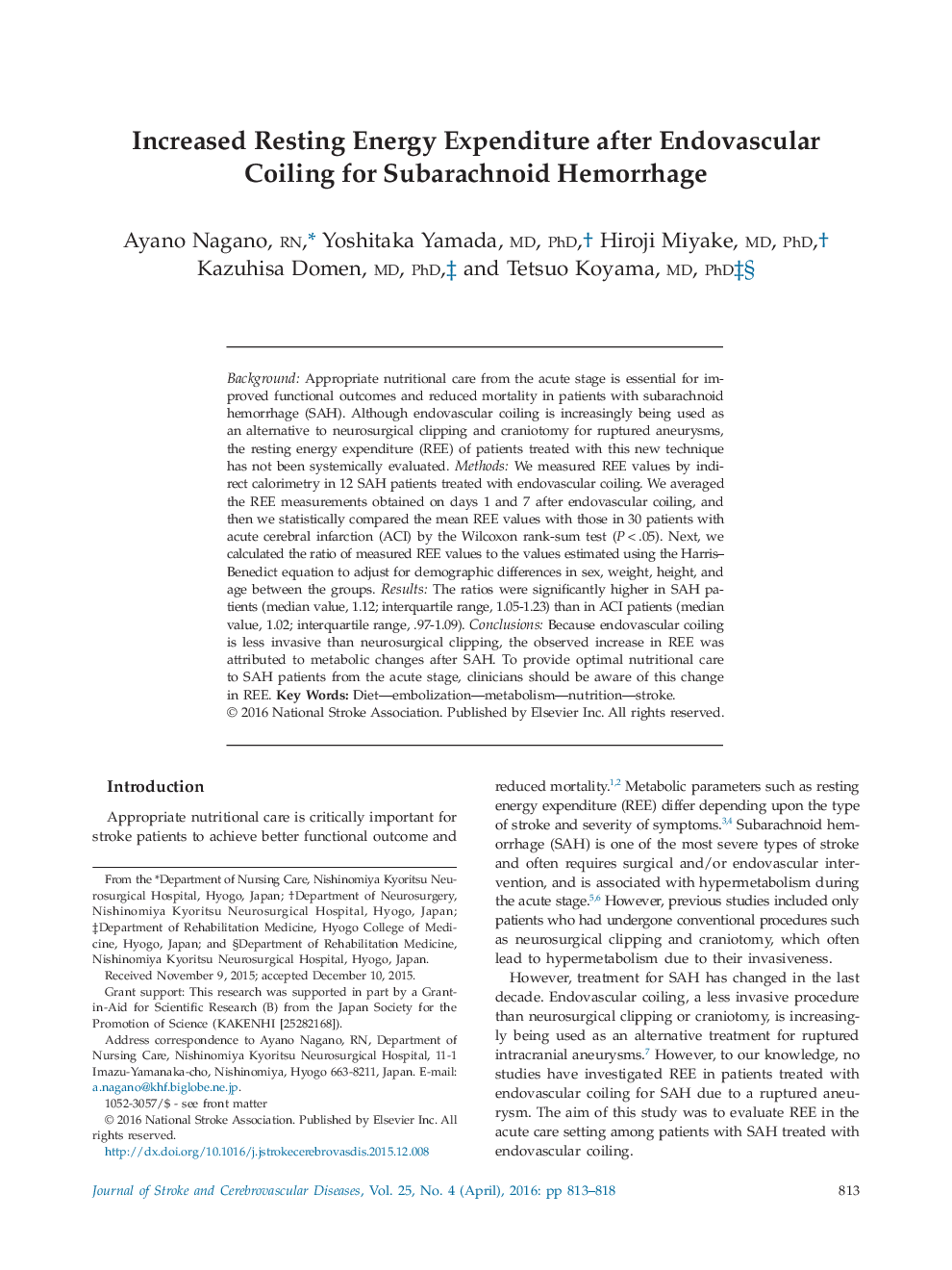| Article ID | Journal | Published Year | Pages | File Type |
|---|---|---|---|---|
| 2701611 | Journal of Stroke and Cerebrovascular Diseases | 2016 | 6 Pages |
BackgroundAppropriate nutritional care from the acute stage is essential for improved functional outcomes and reduced mortality in patients with subarachnoid hemorrhage (SAH). Although endovascular coiling is increasingly being used as an alternative to neurosurgical clipping and craniotomy for ruptured aneurysms, the resting energy expenditure (REE) of patients treated with this new technique has not been systemically evaluated.MethodsWe measured REE values by indirect calorimetry in 12 SAH patients treated with endovascular coiling. We averaged the REE measurements obtained on days 1 and 7 after endovascular coiling, and then we statistically compared the mean REE values with those in 30 patients with acute cerebral infarction (ACI) by the Wilcoxon rank-sum test (P < .05). Next, we calculated the ratio of measured REE values to the values estimated using the Harris–Benedict equation to adjust for demographic differences in sex, weight, height, and age between the groups.ResultsThe ratios were significantly higher in SAH patients (median value, 1.12; interquartile range, 1.05-1.23) than in ACI patients (median value, 1.02; interquartile range, .97-1.09).ConclusionsBecause endovascular coiling is less invasive than neurosurgical clipping, the observed increase in REE was attributed to metabolic changes after SAH. To provide optimal nutritional care to SAH patients from the acute stage, clinicians should be aware of this change in REE.
